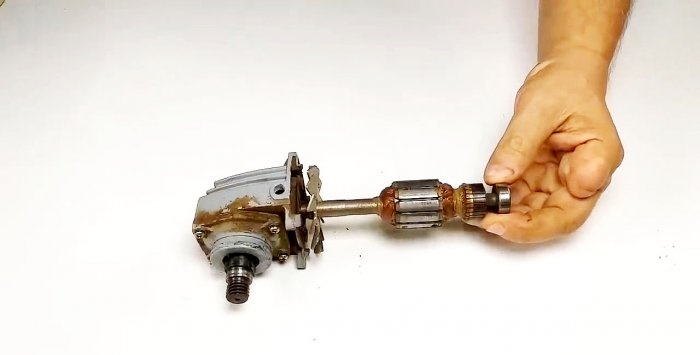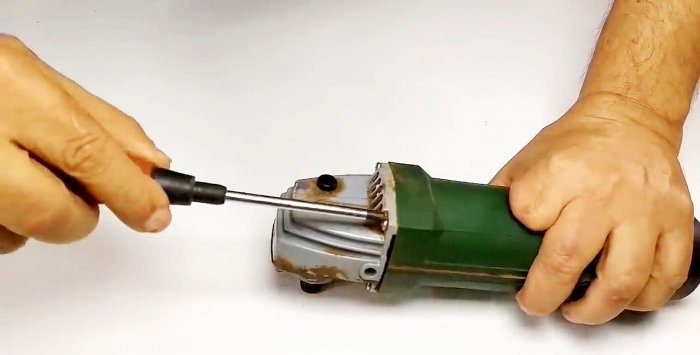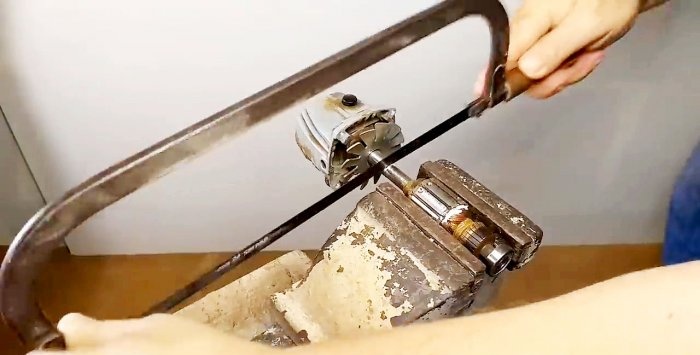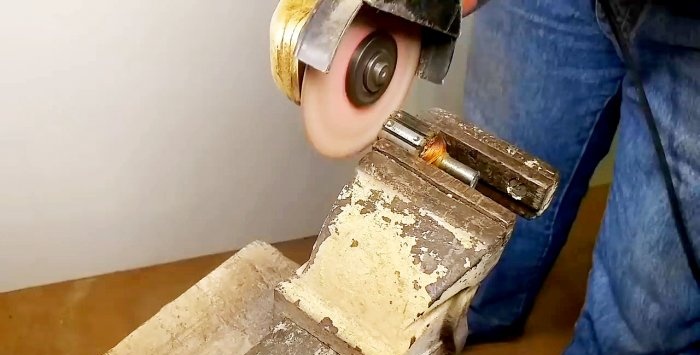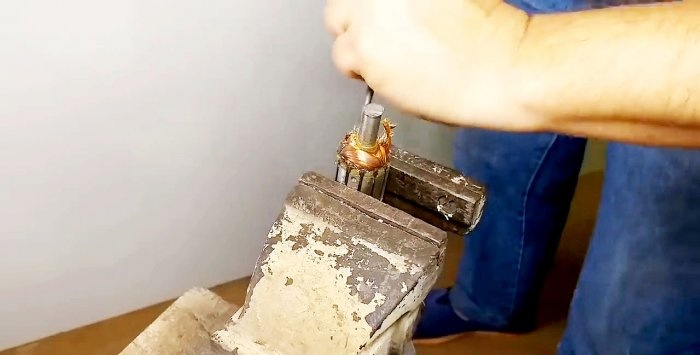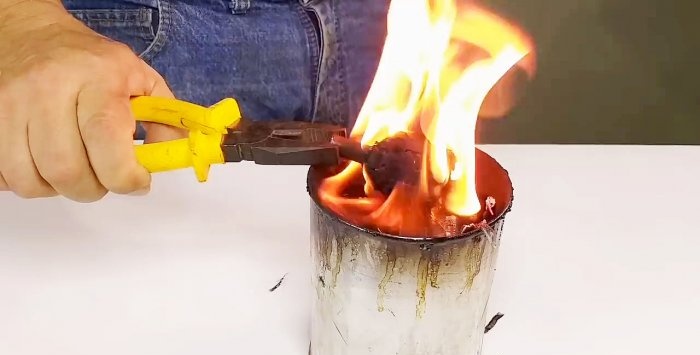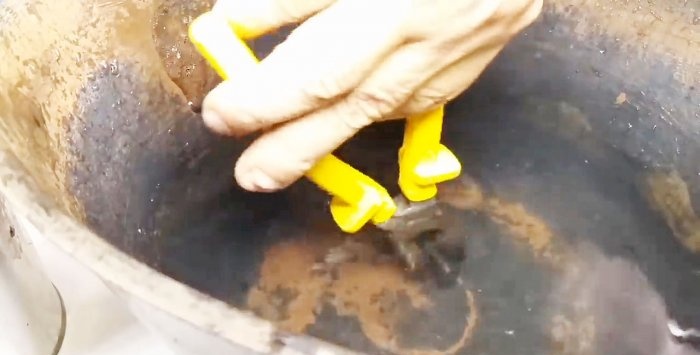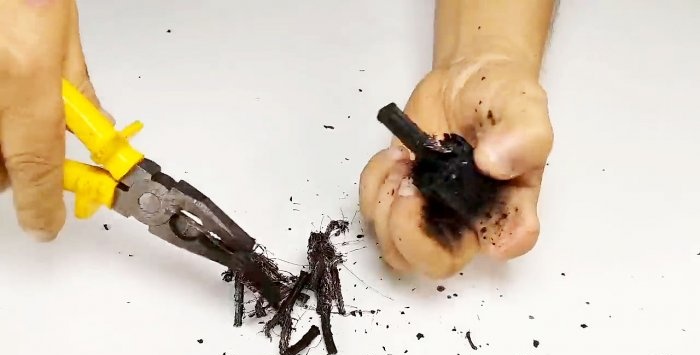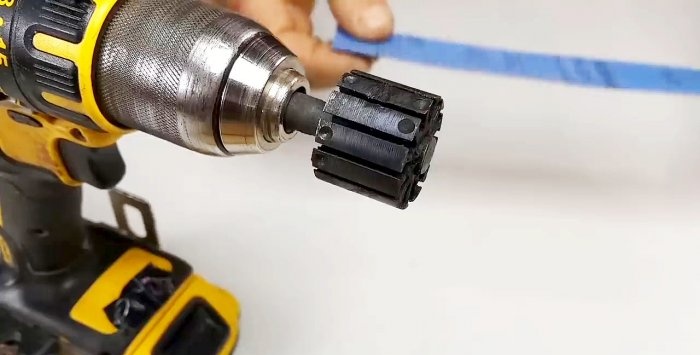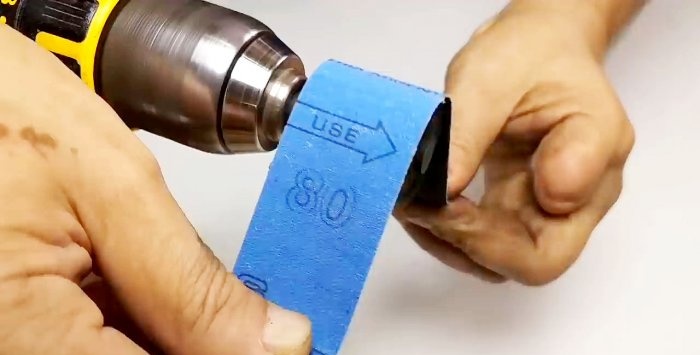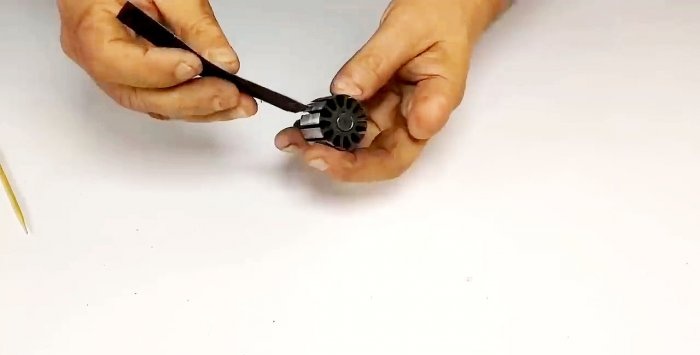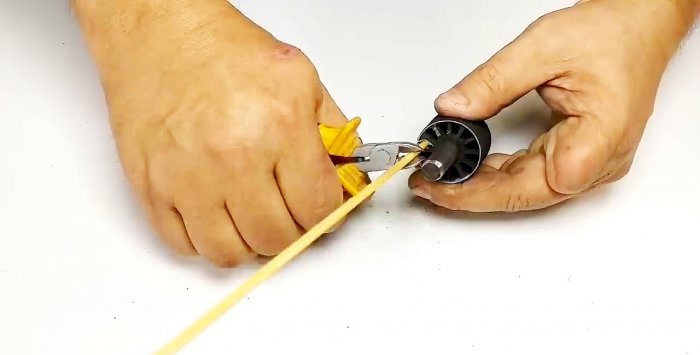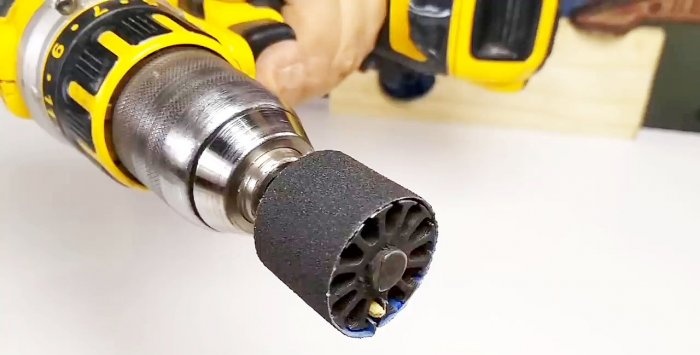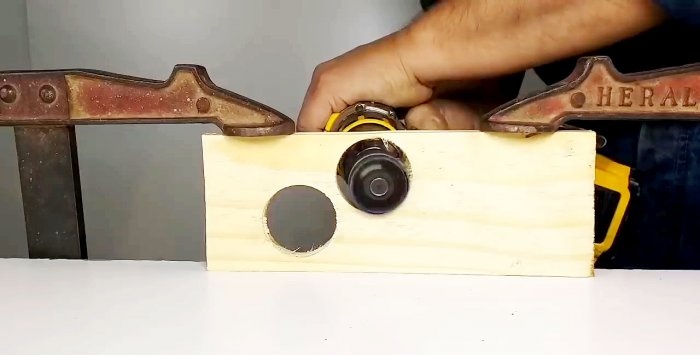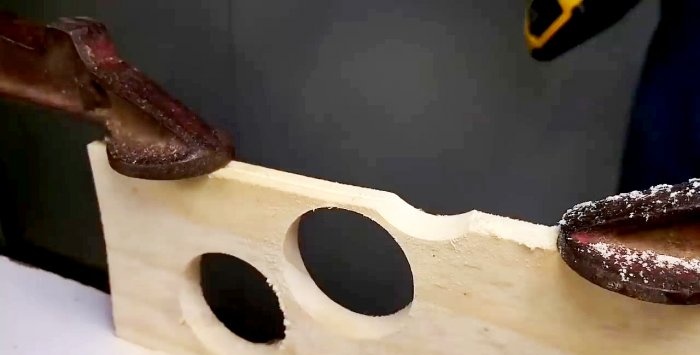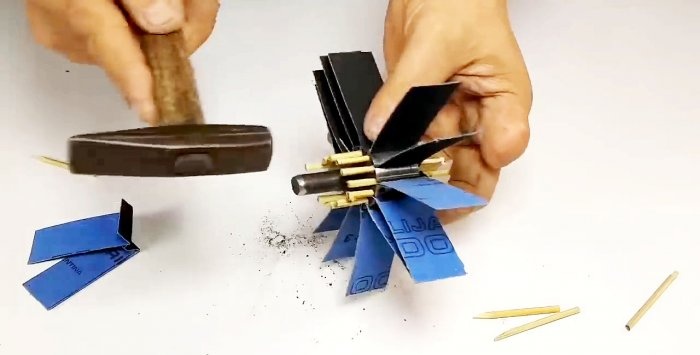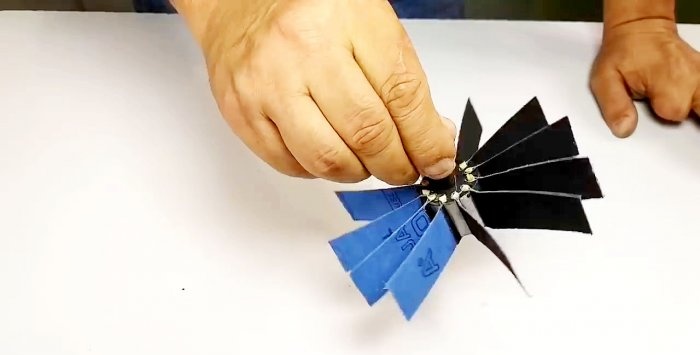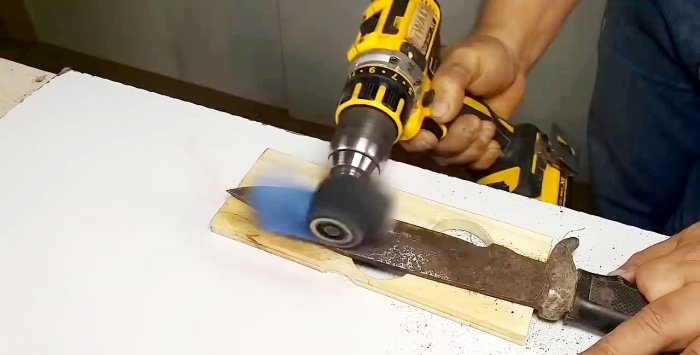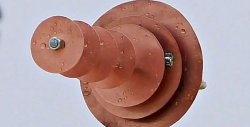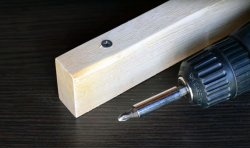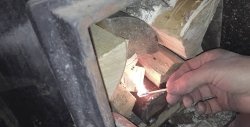2 anchor sanding attachments
A burnt anchor from an angle grinder or other power tool is usually sent to a scrap metal collection site, but it can be put to better use by making a grinding attachment. It is weighty, has good balance and a very good shape for attaching sandpaper.
The motor armature is removed from the broken power tool. It can be removed from an angle grinder, jigsaw, screwdriver, drill, hammer drill, etc.
The armature shaft on the impeller side is cut as long as possible. In the future, this part will be used to clamp the nozzle in the drill chuck, so it is important that the shank does not turn out to be short.
Now the armature needs to be cut off from the side of the contact pad along with the winding along the line of the core.
The workpiece is clamped in a vice. Using a chisel, you need to knock out the protruding part of the winding from the shank side.
The winding remaining in the core can only be dismantled after firing. To do this, the anchor is placed in a fire so that the impregnation that glues the wire burns out. The workpiece must be kept on fire until it stops burning.
The cooled armature, after the impregnation has burned out, is normally cleaned of the wire embedded in the core. Since it becomes covered with soot from the fire, it should be sanded.
Sand with sandpaper to remove blackness.
From a sheet of sanding paper you need to cut a strip the width of the core. Its length should be 1.5-2 cm greater than the circumference of the anchor. The strip is wound around the core, with its edges inserted into one of the segments.
To fix them, a bamboo skewer is driven into the segment. The result is a cylindrical grinding attachment.
The beauty of this attachment is that it's easy to replace paper because you don't need to glue anything. Such equipment can be used for grinding round holes and other difficult surfaces.
The anchor can also be equipped with a petal attachment. To do this, a strip of sandpaper is cut into small pieces. Each of them is inserted into its own segment and clamped with a separate skewer.
Such equipment grinds worse, but it can be used on embossed surfaces. If you use sandpaper on a harder base to make it, the quality of processing will improve.
Both attachments can be placed in a screwdriver or drill, and can also be clamped into a lathe. This is a timeless tool that will never break. As soon as one piece of sandpaper wears off, you just need to put another one on and continue sanding.
Materials:
- engine anchor;
- bamboo skewers;
- sandpaper.
Making the nozzle
The motor armature is removed from the broken power tool. It can be removed from an angle grinder, jigsaw, screwdriver, drill, hammer drill, etc.
The armature shaft on the impeller side is cut as long as possible. In the future, this part will be used to clamp the nozzle in the drill chuck, so it is important that the shank does not turn out to be short.
Now the armature needs to be cut off from the side of the contact pad along with the winding along the line of the core.
The workpiece is clamped in a vice. Using a chisel, you need to knock out the protruding part of the winding from the shank side.
The winding remaining in the core can only be dismantled after firing. To do this, the anchor is placed in a fire so that the impregnation that glues the wire burns out. The workpiece must be kept on fire until it stops burning.
The cooled armature, after the impregnation has burned out, is normally cleaned of the wire embedded in the core. Since it becomes covered with soot from the fire, it should be sanded.
Sand with sandpaper to remove blackness.
Options for attaching sandpaper for a cylindrical nozzle
From a sheet of sanding paper you need to cut a strip the width of the core. Its length should be 1.5-2 cm greater than the circumference of the anchor. The strip is wound around the core, with its edges inserted into one of the segments.
To fix them, a bamboo skewer is driven into the segment. The result is a cylindrical grinding attachment.
The beauty of this attachment is that it's easy to replace paper because you don't need to glue anything. Such equipment can be used for grinding round holes and other difficult surfaces.
Option for attaching sandpaper for a petal attachment
The anchor can also be equipped with a petal attachment. To do this, a strip of sandpaper is cut into small pieces. Each of them is inserted into its own segment and clamped with a separate skewer.
Such equipment grinds worse, but it can be used on embossed surfaces. If you use sandpaper on a harder base to make it, the quality of processing will improve.
Both attachments can be placed in a screwdriver or drill, and can also be clamped into a lathe. This is a timeless tool that will never break. As soon as one piece of sandpaper wears off, you just need to put another one on and continue sanding.
Watch the video
Similar master classes
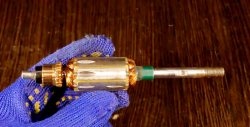
How to turn an electric motor armature into an effective tool
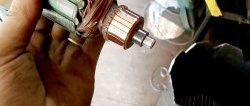
How to turn a power tool armature commutator without a lathe

How to check the armature of a power tool at home
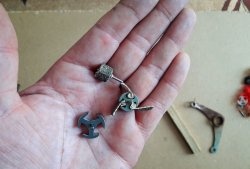
Grinding head made from an armature from an engine
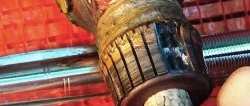
Restoration of electric motor armature commutator plates
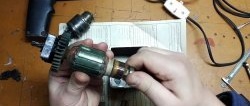
How to make the simplest armature bearing puller
Particularly interesting
Comments (0)

